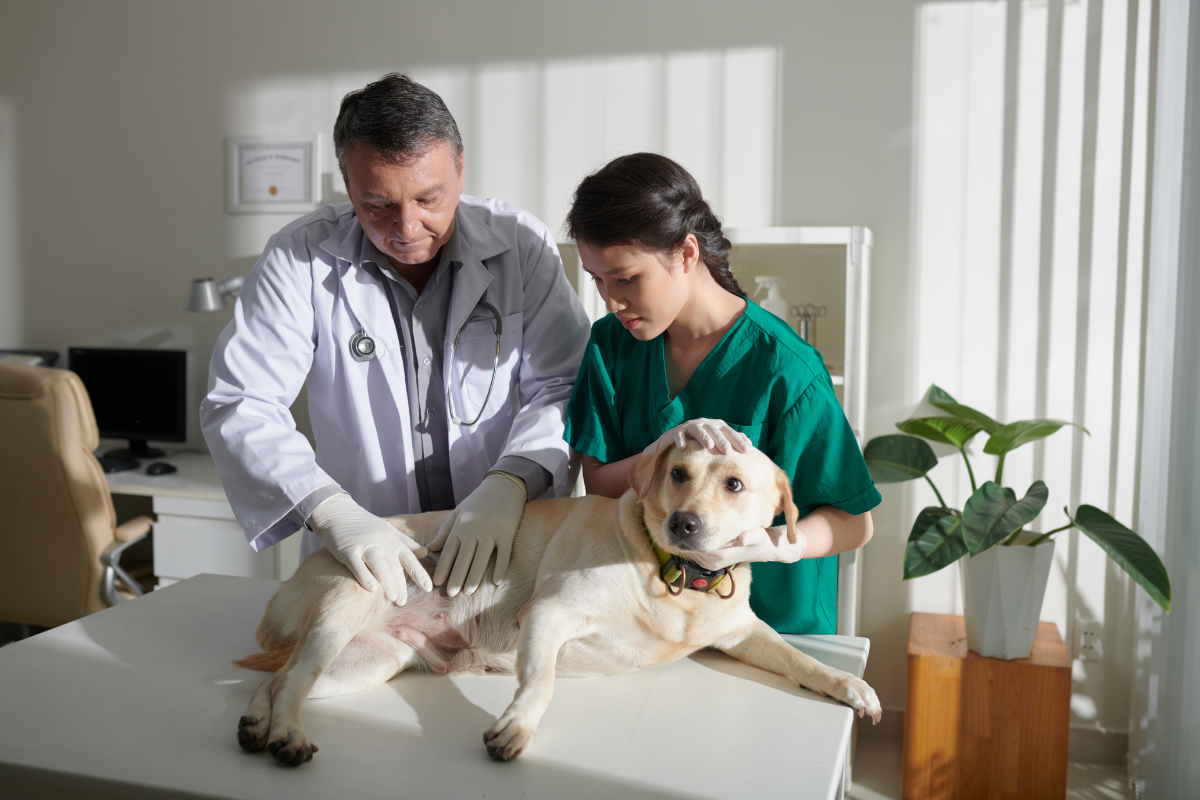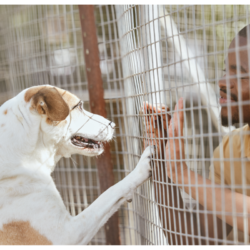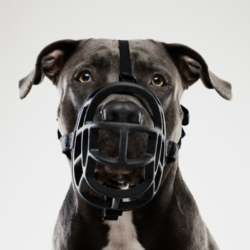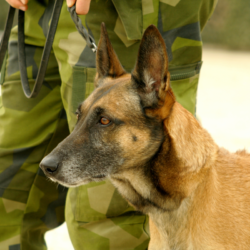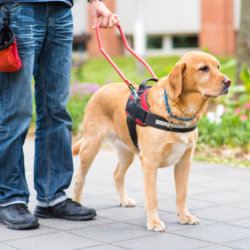Stomach dilatation-torsion syndrome (SDTE), also known as stomach turn-over or gastric torsion, is an extremely serious condition that mainly affects large-breed dogs. It is a genuine medical emergency, requiring rapid intervention to save the animal’s life.
What causes this syndrome?
Stomach dilatation-torsion syndrome (SDTE), or stomach turn-over, is a condition that occurs mainly in large-breed dogs. It is characterised by an accumulation of gas in the stomach, often caused by excessive ingestion of air, food or water. This dilation usually precedes torsion, which occurs when the stomach turns on itself, blocking the way in and out of the stomach.
There are often many causes of torsion. Genetics play a major role, as certain breeds, such as Great Danes, German Shepherds and Saint Bernards, have an increased risk due to the shape of their thorax. Another key factor is the anatomy of the stomach itself, which may be larger and more likely to shift.
Environmental factors also contribute to the condition. A large meal eaten quickly or large quantities of water taken in a short space of time increase the risk. Similarly, strenuous exercise just after eating can cause the stomach to turn. Finally, older or overweight dogs are particularly vulnerable, as their stomachs are often larger and their muscles less toned.
It is therefore crucial for owners of dogs at risk to keep a close eye on their pet’s diet and lifestyle in order to limit the chances of this syndrome developing.
What are the symptoms of stomach torsion?
Symptoms of stomach torsion in dogs appear rapidly after a meal and should be taken seriously. The first observable sign is often unsuccessful attempts to vomit or vomiting with very little content. The dog may also produce excessive, frothy salivation.
As the animal’s condition deteriorates, swelling of the abdomen is observed, accompanied by a sensation of a taut or hard stomach to the touch. If the abdomen is gently tapped, it may sound like a hollow drum, indicating the presence of excess gas. This phenomenon is called meteorisation. The dog may also show signs of severe abdominal pain, becoming agitated, nervous and refusing to lie down or remain calm.
Other symptoms include a general state of weakness, with pale mucous membranes (such as the gums), rapid or difficult breathing, and an increased heart rate. If left untreated for too long, torsion causes the dog to go into shock. This is manifested by sudden immobility, extreme lethargy and a lack of reaction to the environment.
It is important to act immediately if you observe these symptoms, as torsion of the stomach is a veterinary emergency that can be fatal if not treated quickly.
How is it diagnosed?
Diagnosis of torsion of the stomach is based mainly on observation of clinical symptoms and imaging tests. When a dog shows signs of dilatation-torsion, the vet carries out a full clinical examination. He assesses the animal’s general condition, looks for any swelling of the abdomen, and palpates to check for pain.
X-rays are one of the most commonly used tools for confirming the diagnosis. It shows any twisting of the stomach, as well as the presence of gas or liquid indicating an obstruction. The vet sometimes uses an ultrasound scan to assess the condition of the other organs and check the seriousness of the situation. Blood tests can complete the diagnosis to detect electrolyte imbalances or any organ failure due to shock.
It is essential to note that rapid diagnosis is crucial to the animal’s survival. If torsion is suspected, consult a vet immediately, as prompt treatment increases the chances of survival.
What treatments are available?
Treatment of stomach torsion is a surgical emergency. Before the operation, stabilisation of the dog is crucial. This involves administering intravenous fluids to restore blood circulation and electrolyte balance. Antibiotics and painkillers may also be given to prevent infection and relieve pain.
The vet then performs gastric decompression by inserting a tube into the stomach via the mouth, under anaesthetic, or by piercing the stomach with a trocar to release accumulated gas.
Once the vet has stabilised the animal, he will immediately perform surgery to reposition the stomach. In some cases, damaged parts of the stomach or spleen may be removed. The vet then performs a gastropexy, fixing the stomach to the abdominal wall to prevent recurrence.
After the operation, the animal is placed under veterinary supervision for several days. Post-operative care is essential to avoid complications such as infection or recurrence.
What are the means of prevention?
Preventing stomach torsion in dogs is based on a number of good day-to-day practices. Splitting meals into small portions several times a day is a key measure to avoid putting too much pressure on the stomach. It is also important not to give large meals just before or after intense physical exercise.
Avoiding stress during meals can also limit the risks. Dogs need a calm environment when they are eating, and it is advisable not to feed them all at the same time, especially in households with several animals.
Using low (not raised) bowls and anti-glutton bowls also helps to slow down the speed at which the dog eats, which helps to limit the ingestion of air and excess food.
Vets recommend preventive gastropexy for high-risk dogs, particularly those with a family history of gastric torsion.

